Is Travertine Bathtub a Good Idea or a Bad Idea
Travertine Bathtub: Natural stone has been increasingly popular among homeowners in past years, with several people utilizing it for various purposes. This is especially true in bathrooms, where the natural stone may be used for flooring, wall mosaics, vanity tops, tub surrounds, etc. Travertine is a natural stone that is extremely popular in bathrooms. It is popular among homeowners because of its beautiful appearance and appealing range of colour variants, venations, and designs.
A travertine bathtub is also a classic element that adds elegance, comfort, attractiveness, and individuality to your house. Travertine marble, on the other hand, is an Italian stone that perfectly portrays Roman traditionalism. However, today's designers and architects use travertine in even the most cutting-edge projects because of its incredible adaptability. This natural stone's orange and tan colours give a natural softness that physically enhances the clean lines of modern designs.
The right Travertine Tile for your Bathroom
Travertine is a natural stone that is attractive to homeowners. It is available in various colours, ranging from delicate cream to rusty brown, and has a diverse pattern. Travertine tiles are unique in that no two are alike, and their unusual grain designs are beautiful when utilized across a broad surface area.
When the travertine is wet, the many colours inside the stone come to life. Travertine is usually stunning, but it shines when it's wet. As shown in today's guest article, this makes travertine particularly attractive in a bathroom. Travertine, on the other hand, is likey not for you if you like a homogeneous aethestic!
The most excellent travertine tile textures for bathrooms, according to experts, are hone-finished or tumble-finished. The matte surface of travertine with a honed polish softens the stone's look. On the other hand, Tumble-finished travertine has a tarnished look that brings out the stone's inherent colours. These two finishes are great for bathrooms because they can tolerate spillage from cosmetics and other beauty products every day in bathrooms.
Travertine Shower Tile
It's critical to adequately apply an appropriate sealer to protect travertine in the bathroom and other high-moisture locations. This will keep the travertine from absorbing water (after all, a porous stone) and make it simpler to keep clean. Take your time to select a trustworthy contractor to install travertine in your bathroom since the installation is crucial to the success of bathroom tiles.
The use of travertine in the bathroom isn't limited to the flooring and walls. Travertine has also been utilized in bathroom fixtures like as basins and bathtubs, and you could have travertine throughout your bathroom if you wanted to.
Why Travertine is so popular
It is becoming viral because travertine is a natural stone like marble, onyx, limestone, slate, granite, etc. It is created by the fast precipitation of calcium carbonate and is most commonly seen around the entrance of hot springs or in limestone caverns. It's also known as travertine marble or travertine limestone. Although travertine is classed as limestone rather than marble, the two stones are the same.
The most significant difference between travertine and other natural stones is the rock's creation, durability, and fibrous but concentric look. The naturally formed pits across the stone's surface, which give it an old and worn appearance, are one of the essential features of travertine.
How to take care of Travertine
In a bathroom, travertine tiles look great. You won't have a problem with leakage if you seal your travertine tiles after installation, whether you use them on the floor, the walls, or in the shower. Brush or roll the sealant onto clean travertine tiles, then apply a second layer once the first has dried. Allow 24 hours for the bond to cure after sealing a shower or bath area. Reapply the sealant every two years or more frequently in a shower area.
Your travertine tiles are simple to maintain. You can clean up spills with a damp mop and dust with a vacuum. You may also use travertine and marble-specific cleaning solution but try it first in an inconspicuous region before applying it to the significant area.
Can you use Travertine on the wall?
Walls can be covered with travertine tiles. Travertine may be used as a backsplash or to tile your shower area. If you're going to use travertine in a wet room, choose filled travertine tiles because they have fewer holes to absorb water.
As long as you take care of your travertine tiles, they will look lovely for as long as your bathroom is in use. So make the correct decision and renovate your bathroom with travertine.
What is the Famous History Building Made of Travertine?
Temples, baths, aqueducts, and theatres were all built using travertine. Travertine was used nearly entirely in the construction of the renowned Colosseum. According to Marcus Vitruvius Pollio, the ancient Turkish city of Hierapolis (which meant sacred town and was said to have been created by the deity Apollo himself) was nearly entirely made of travertine.
How is the Travertine Bathtub fit with different types of bathroom
Travertine bathtubs are ideal for bathrooms not just because of their attractiveness but also because of their ease of upkeep. Travertine in bathrooms is easy to clean and does not exhibit wet stains or soap scum, which are the bane of all homeowners. These tenacious stains can be removed using a squeegee.
Because travertine tile comes in so many colours and patterns, your bathroom design possibilities are virtually limitless. You'll undoubtedly discover a colour and style that complements the design you choose.
The use of travertine tile in the bathroom is a contentious topic that perplexes many people, especially those new to bathroom design. This is because travertine is a porous natural stone, making some feel it is unsuitable for locations where water is nearly constantly present.
Travertine can be utilized in the bathroom. It all depends on the sort of finish you pick and how well it's installed. Travertine is one of the ideal stones for bathrooms when correctly installed.
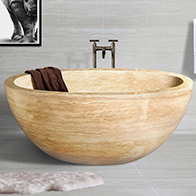 Travertine bath
Travertine bath
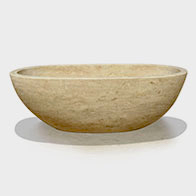 Travertine bathtub
Travertine bathtub
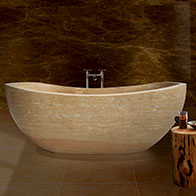 Travertine Tub
Travertine Tub
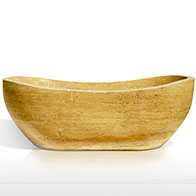 Freestanding marble tub
Freestanding marble tub
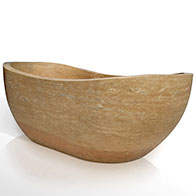 Marble Bathtub for sale
Marble Bathtub for sale
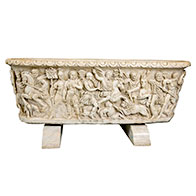 marble bathtub price
marble bathtub price
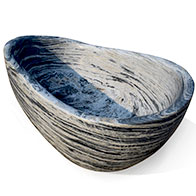 marble bathtub
marble bathtub
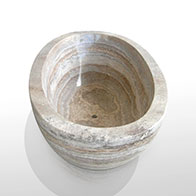 marble freestanding tub
marble freestanding tub
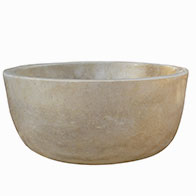 marble soaking tub
marble soaking tub
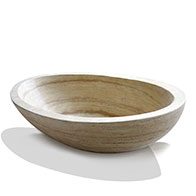 marble tub
marble tub
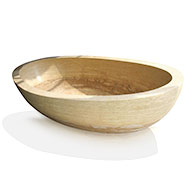 solid marble bathtub
solid marble bathtub
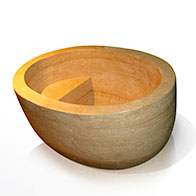 travertine bathtubs
travertine bathtubs
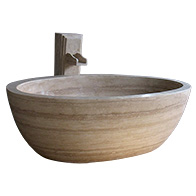 travertine tubs
travertine tubs
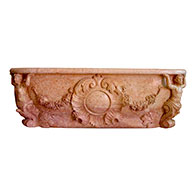 vintage bathtubs
vintage bathtubs
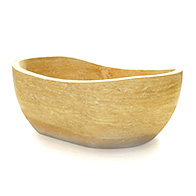 yellow marble tubs
yellow marble tubs